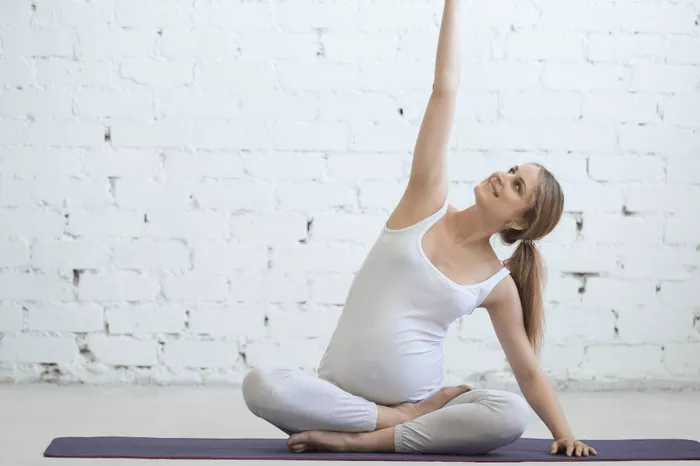Ashtanga yoga is a dynamic and physically demanding style of yoga that offers numerous benefits, including improved flexibility, strength, mental clarity, and endurance. Rooted in discipline and consistency, Ashtanga follows a structured sequence of postures (asanas) linked by breath (vinyasa) and focuses on internal energy locks (bandhas) and gaze points (drishti).
However, despite its many benefits, Ashtanga yoga may not be suitable for everyone at all times. Certain physical, mental, and lifestyle factors can make practicing Ashtanga yoga either risky or counterproductive. In this article, we will explore when it is best to avoid or modify your Ashtanga practice to ensure safety and well-being.
1. If You Are a Complete Beginner to Yoga
Ashtanga yoga is not the best choice for those who are entirely new to yoga. Unlike gentle or beginner-friendly styles such as Hatha or Yin yoga, Ashtanga is physically demanding and requires knowledge of breath control, alignment, and endurance. The series of poses flow quickly from one to the next, making it challenging for beginners to keep up.
Alternatives: If you are new to yoga, consider starting with a slower-paced practice such as Hatha yoga or beginner Vinyasa classes to build strength, flexibility, and awareness before attempting Ashtanga.
2. During Injury or Recovery from Surgery
If you are dealing with an injury—especially in the wrists, shoulders, knees, spine, or hamstrings—Ashtanga yoga may not be the best option. The repetitive movements and weight-bearing poses (such as Chaturanga Dandasana, jump-backs, and forward bends) can put excessive strain on injured areas, delaying recovery or worsening the condition.
Alternatives: During recovery, focus on gentle stretching, restorative yoga, or physical therapy as advised by a healthcare professional. When cleared for activity, you may modify poses or practice a slower version of Ashtanga under expert guidance.
3. If You Are Pregnant (Especially in the First Trimester)
Pregnancy brings significant changes to the body, including hormone shifts that affect flexibility and joint stability. Ashtanga yoga involves deep forward folds, backbends, twists, and transitions that can put strain on the abdomen and ligaments, increasing the risk of injury or discomfort. The traditional method discourages pregnant women from practicing during the first trimester due to the risk of miscarriage.
Alternatives: After the first trimester, a modified yoga practice tailored to pregnancy (such as prenatal yoga) is a safer option. Consult a qualified instructor to adapt your practice accordingly.
4. If You Are Extremely Fatigued or Sleep-Deprived
Ashtanga yoga requires a high level of energy and mental focus. If you are severely fatigued, burned out, or sleep-deprived, engaging in an intense Ashtanga session may further exhaust your body instead of rejuvenating it. This can lead to poor form, increased injury risk, and a lack of enjoyment in your practice.
Alternatives: On days of extreme fatigue, opt for gentle stretching, breathwork (pranayama), or meditation. If you still want to move, consider a restorative or Yin yoga session instead.
5. If You Have Uncontrolled High Blood Pressure or Heart Conditions
Ashtanga yoga is physically intense and generates significant cardiovascular activity. If you have uncontrolled high blood pressure, heart disease, or other cardiovascular conditions, the rapid movements and challenging postures can put unnecessary strain on your heart and circulation.
Alternatives: Consult your doctor before practicing any vigorous form of yoga. If approved, a gentler style such as Hatha or restorative yoga, focusing on breath control and relaxation, may be more suitable.
6. During Times of Extreme Stress or Anxiety Attacks
While yoga is often recommended for stress relief, the fast-paced nature of Ashtanga can sometimes be overwhelming, especially for those experiencing acute stress or panic attacks. The pressure to keep up with the sequence and the physical demands may heighten anxiety rather than alleviate it.
Alternatives: Instead of Ashtanga, consider practicing slower, mindful yoga styles such as Yin or restorative yoga. Breathwork exercises like Nadi Shodhana (alternate nostril breathing) or meditation may also help manage stress more effectively.
7. If You Have Severe Joint or Back Issues
Conditions such as arthritis, herniated discs, chronic lower back pain, or knee problems require caution in physical activities. Many Ashtanga poses involve deep forward folds, backbends, and weight-bearing transitions, which can exacerbate pain or cause further damage.
Alternatives: People with joint or back conditions should consult a healthcare professional before practicing yoga. A modified or therapeutic yoga approach may be more beneficial in managing pain and improving mobility.
8. During Menstruation (For Some Practitioners)
In traditional Ashtanga yoga, practitioners are often advised to avoid practicing during the first few days of menstruation, a period referred to as “ladies’ holiday.” This is based on the belief that strenuous exercise, inversions, and bandha engagement may interfere with the body’s natural flow and energy balance. However, this is a personal choice, as some women feel comfortable practicing during their cycle.
Alternatives: If you prefer to rest during menstruation, consider doing gentle stretches, breathwork, or meditation instead. If you choose to practice, listen to your body and modify your routine as needed.
9. If You Are Recovering from a Cold, Flu, or Infection
When your body is fighting an infection, practicing intense physical exercise like Ashtanga yoga can place unnecessary stress on your immune system, potentially prolonging your illness. Fever, congestion, and body aches make it difficult to practice effectively and could also risk spreading illness to others.
Alternatives: Rest is the best course of action during illness. When you start feeling better, gentle stretching or pranayama (such as deep breathing) may help support your recovery.
10. If You Struggle with Perfectionism or Obsessive Thinking
Ashtanga yoga follows a strict sequence, which can sometimes lead to a perfectionist mindset or excessive self-criticism. If you have a tendency toward obsessive thinking, rigid discipline, or anxiety around performance, this structured practice might increase mental stress rather than offer relaxation.
Alternatives: If you find yourself feeling pressured or frustrated, consider integrating a more fluid yoga style, such as Vinyasa flow or free-form movement, to cultivate self-compassion and flexibility in your practice.
Conclusion
Ashtanga yoga is a rewarding and transformative practice, but it is not suitable for everyone at all times. Whether due to physical limitations, mental well-being, or life circumstances, there are moments when practicing Ashtanga may not be advisable.
Listening to your body and seeking professional guidance when needed can help you make informed decisions about your yoga journey. The key is to practice yoga in a way that enhances your health and well-being rather than causing harm. If Ashtanga is not appropriate for you at a particular time, there are many other yoga styles and modifications that can provide the benefits you seek.
Ultimately, yoga is about balance, awareness, and honoring your body’s needs—on and off the mat.
Related Topics:














